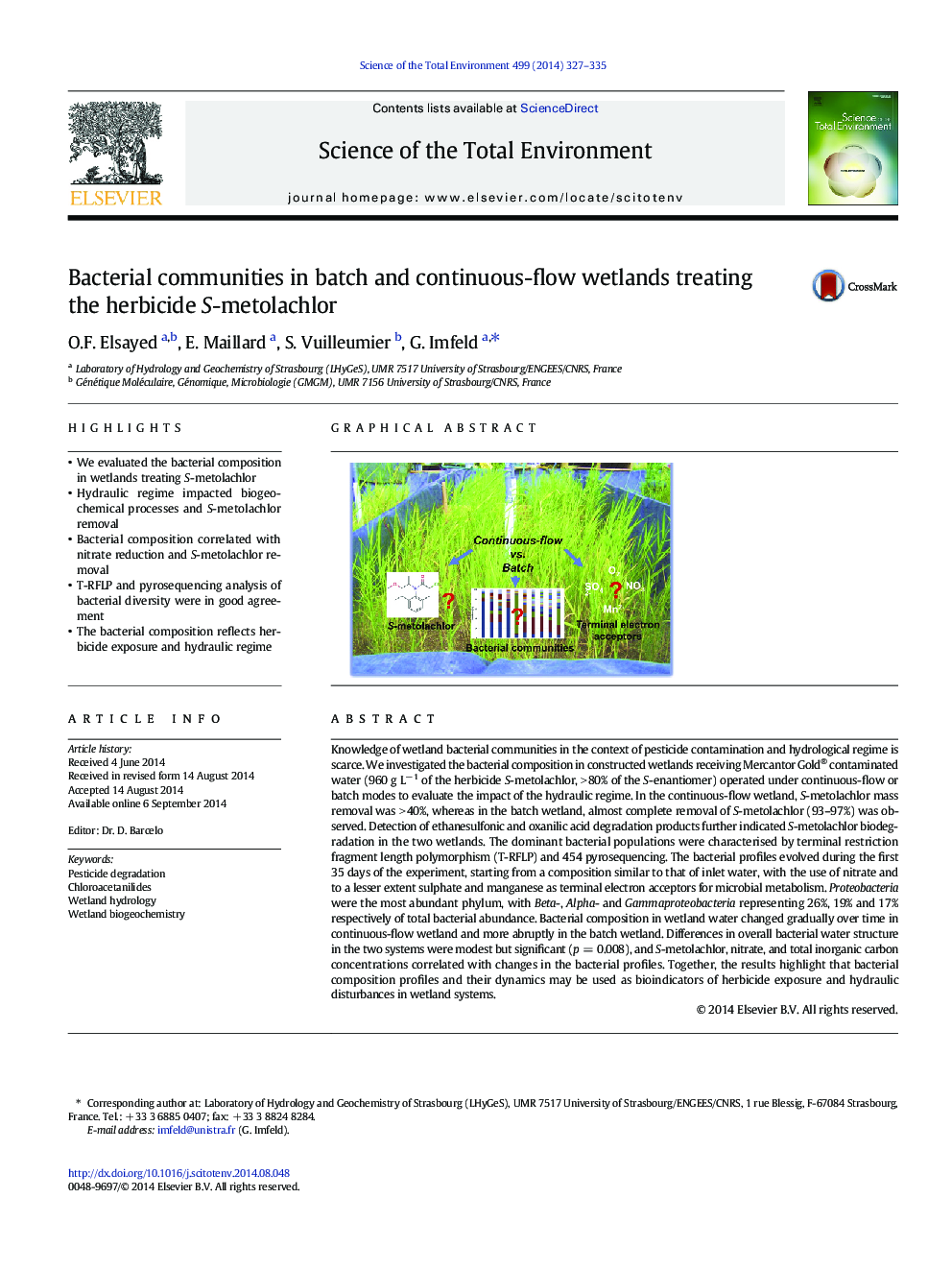| کد مقاله | کد نشریه | سال انتشار | مقاله انگلیسی | نسخه تمام متن |
|---|---|---|---|---|
| 6328926 | 1619774 | 2014 | 9 صفحه PDF | دانلود رایگان |

- We evaluated the bacterial composition in wetlands treating S-metolachlor
- Hydraulic regime impacted biogeochemical processes and S-metolachlor removal
- Bacterial composition correlated with nitrate reduction and S-metolachlor removal
- T-RFLP and pyrosequencing analysis of bacterial diversity were in good agreement
- The bacterial composition reflects herbicide exposure and hydraulic regime
Knowledge of wetland bacterial communities in the context of pesticide contamination and hydrological regime is scarce. We investigated the bacterial composition in constructed wetlands receiving Mercantor Gold® contaminated water (960 g Lâ 1 of the herbicide S-metolachlor, > 80% of the S-enantiomer) operated under continuous-flow or batch modes to evaluate the impact of the hydraulic regime. In the continuous-flow wetland, S-metolachlor mass removal was > 40%, whereas in the batch wetland, almost complete removal of S-metolachlor (93-97%) was observed. Detection of ethanesulfonic and oxanilic acid degradation products further indicated S-metolachlor biodegradation in the two wetlands. The dominant bacterial populations were characterised by terminal restriction fragment length polymorphism (T-RFLP) and 454 pyrosequencing. The bacterial profiles evolved during the first 35 days of the experiment, starting from a composition similar to that of inlet water, with the use of nitrate and to a lesser extent sulphate and manganese as terminal electron acceptors for microbial metabolism. Proteobacteria were the most abundant phylum, with Beta-, Alpha- and Gammaproteobacteria representing 26%, 19% and 17% respectively of total bacterial abundance. Bacterial composition in wetland water changed gradually over time in continuous-flow wetland and more abruptly in the batch wetland. Differences in overall bacterial water structure in the two systems were modest but significant (p = 0.008), and S-metolachlor, nitrate, and total inorganic carbon concentrations correlated with changes in the bacterial profiles. Together, the results highlight that bacterial composition profiles and their dynamics may be used as bioindicators of herbicide exposure and hydraulic disturbances in wetland systems.
Journal: Science of The Total Environment - Volume 499, 15 November 2014, Pages 327-335